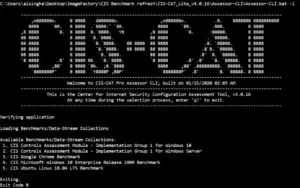S&P 500 AI Adoption Presents Significant Security Risks

- New research reveals S&P 500 companies’ widespread use of AI has introduced hundreds of security flaws, risking data breaches, IP theft, and critical infrastructure attacks.
Artificial intelligence is now deeply integrated into the business operations of many S&P 500 companies. However, a recent investigation by Cybernews researchers has uncovered hundreds of potential security issues across various sectors. These risks range from insecure AI outputs to vectors for critical infrastructure attacks. The study analyzed 327 S&P 500 companies that publicly report using AI tools in their daily activities, including internal business tools and customer-facing systems. This deep integration highlights the growing security challenges accompanying this technological transformation.
The Three Primary Threat Vectors
The research identifies three dominant security threats stemming from AI adoption. Insecure output is the most widespread risk, with 205 potential issues noted across technology, finance, and healthcare. This could manifest as chatbots leaking customer data, financial bots giving flawed advice, or medical AIs “hallucinating” unsafe treatments. Following this is data leakage, with 146 potential threats where AI models inadvertently expose sensitive information like customer data or proprietary source code. This often happens through prompt injection attacks, where a model “remembers” and reveals data it shouldn’t.
Intellectual property (IP) theft rounds out the top three risks, with 119 cases where proprietary business data or R&D secrets could be exposed. Attackers can use model extraction techniques to reverse-engineer an AI’s logic by feeding it thousands of queries. This allows them to siphon off valuable trade secrets that make a business unique. Martynas Vareikis, a security researcher at Cybernews, noted that the tension between innovation and vulnerability now defines corporate America’s approach to AI.
Emerging and Documented Risks
Beyond the primary threats, other risks are also quickly gaining ground. Algorithmic bias, which occurs when a model is trained on non-representative data, has been documented 37 times. This could lead to systemic discrimination, particularly in sectors like finance. The research also found 49 documented cases of potential critical infrastructure attack vectors, where AI vulnerabilities could be weaponized against essential systems like power grids and water treatment plants.
The energy sector alone has 35 potential issues in this category, making it a prime target for high-stakes exploits. Supply chain disruptions (54 instances), model evasion (38), and data poisoning (24) are also on the rise, showing a broad and evolving attack surface. According to Žilvinas Girėnas, head of product at nexos.ai, the biggest risks aren’t just about the technology itself but rather how it’s used and secured. He argues that businesses need to apply the same high safety standards to AI as they do to other critical systems, with constant oversight and a “zero-trust” approach.
Sector-Specific Vulnerabilities
The study highlights that AI vulnerabilities are showing up across all sectors, with significant consequences. While healthcare, energy, and finance are high-profile targets, technology, industrial, and retail are equally, if not more, exposed. Technology, software, and semiconductors top the list with 202 total potential issues across 61 companies, including 40 cases of IP theft and 34 of insecure output. Financial services and insurance face the highest number of potential data leakage issues (35) and a striking 22 cases of algorithmic bias.
Healthcare and pharmaceuticals are at particular risk for patient safety, with 19 potential issues identified, along with 24 data leak risks. The industrial and manufacturing sectors, along with critical infrastructure and energy, together account for 38 critical infrastructure attack vectors. Retail, logistics, and transportation are also seeing a rise in data leakage and supply chain disruption risks due to their reliance on AI for operations. Even the defense and aerospace sector isn’t immune, with 8 potential national security risks noted. This paradox of efficiency gains and systemic fragility underscores the defining challenge of corporate AI adoption today.
Additional Information
|








